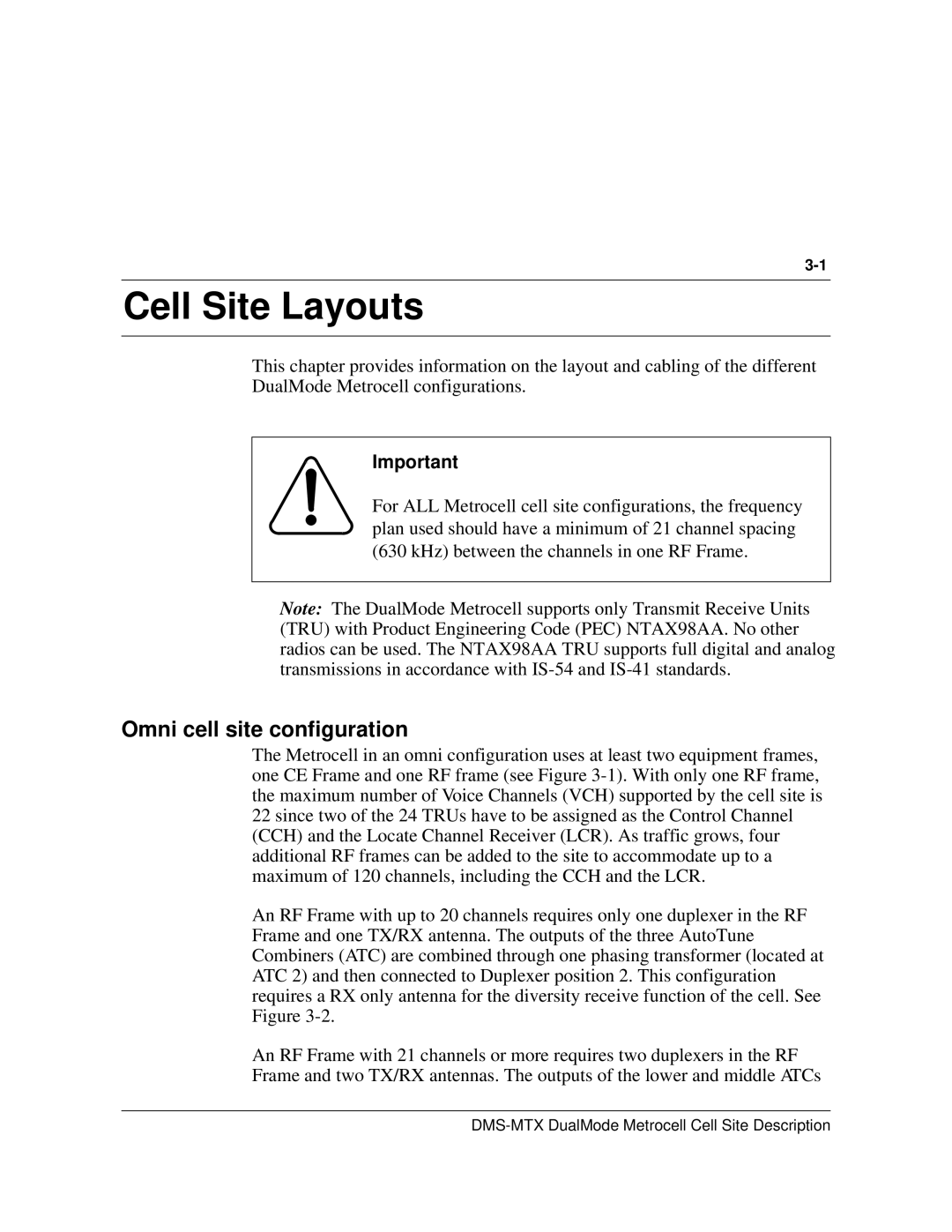
Cell Site Layouts
This chapter provides information on the layout and cabling of the different DualMode Metrocell configurations.
Important
For ALL Metrocell cell site configurations, the frequency plan used should have a minimum of 21 channel spacing (630 kHz) between the channels in one RF Frame.
Note: The DualMode Metrocell supports only Transmit Receive Units (TRU) with Product Engineering Code (PEC) NTAX98AA. No other radios can be used. The NTAX98AA TRU supports full digital and analog transmissions in accordance with
Omni cell site configuration
The Metrocell in an omni configuration uses at least two equipment frames, one CE Frame and one RF frame (see Figure
An RF Frame with up to 20 channels requires only one duplexer in the RF Frame and one TX/RX antenna. The outputs of the three AutoTune Combiners (ATC) are combined through one phasing transformer (located at ATC 2) and then connected to Duplexer position 2. This configuration requires a RX only antenna for the diversity receive function of the cell. See Figure
An RF Frame with 21 channels or more requires two duplexers in the RF Frame and two TX/RX antennas. The outputs of the lower and middle ATCs
